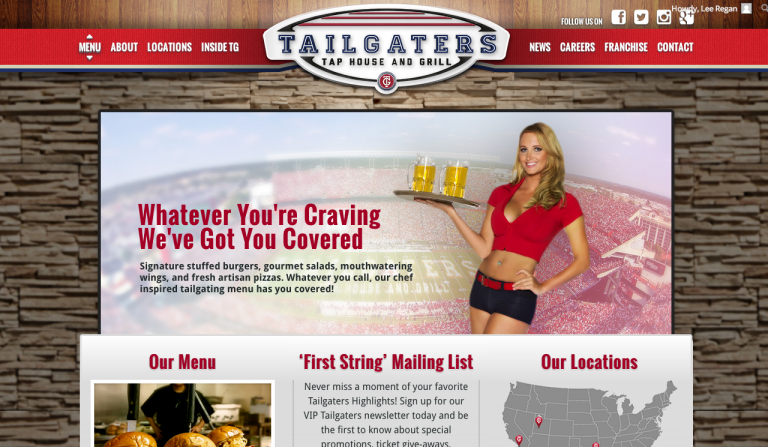Long gone are the days when announcing a new product was simply a matter of putting together a news release, sending it off over the wire and counting on major news outlets to spread the word. Today, because consumers are able to get information from a variety of sources and platforms, a successful product launch requires an integrated approach; one that includes traditional, social and online marketing tools. Here’s a look at how to focus these approaches into one concerted effort around a product launch. (View Original Article Here)
1. Traditional Methods

Even though new media seems to get all the glory, traditional television, print or radio media outreach remains an effective way to expose a never-before-seen product to the masses. Be sure to clearly spell out the elements of your product that make it newsworthy. How is it different from your existing products? How is it different from other similar products? What benefits does it provide to the consumer? You can also go a step further and subscribe toHelp a Reporter Out, ProfNet and NewsBasis. These are great resources for connecting with journalists who are looking for experts and story ideas.
Don’t discount other proven methods like advertising, trade shows, speaking opportunities, promotional events and direct mail. Ignoring them can lead to wasted opportunities. If you invest the time to truly understand the demographics and behaviors of the people you’re hoping to reach, you’ll know if these traditional methods are worth your time and investment.
2. Search Engine Optimization (SEO)
Before you begin your online efforts to market your new product, you must have a “home base,” which ideally is a search-friendly website or blog. When launching a product, to aid both potential customers and contribute to optimized search engine performance, consider creating a product-specific landing page that features photos, descriptions and/or video. Make sure this page is appropriately coded for search, complete with keyword-rich copy, title tags, header text, a unique URL and meta information that succinctly describes your new product. Make sure this page is visible and easily accessible from your home page, at least for its initial release.
To build your online content library, consider enhancing your traditional media outreach efforts and social media news presence by distributing your product press release using paid services with both text-only and multimedia options, such as PR Newswire, PRWeb andPitchEngine. If you’re looking for a less expensive route, Free Press Release and PR Logallow you to share news for free.
3. E-mail Marketing
E-mail marketing is a fantastic way to provide specialized content to people with whom you’ve already built relationships. Consider offering a pre-order for your new product, exclusive only to e-mail recipients. Or, offer a sneak peek at the new product before it’s released to the public. This will help to nurture and reward your existing relationships and continue building on the trust you’ve already earned.
Additionally, you may set up an e-mail drip campaign that sends messages on a regular schedule at timed intervals to keep your product or service top-of-mind with your customers, and also to keep the sales funnel flowing.
4. Online Advertising
Tools such as Google AdWords (and other pay-per-click services) can boost awareness and funnel parties directly to your product. Online advertising allows you to get in front of a specific audience but with wide reach.
Another option is to do some research to determine the most widely read blogs and sites in your industry and also those frequented by people in your target markets. Advertising is often the main revenue generator on these sites and blogs, so it’s a great way to begin building relationships with the editors and site operators for a chance to get in front of the people who are most inclined to care about your product.
Don’t overlook opportunities to advertise on social networks. Some have predicted that $4 billion will be spent on Facebook advertising alone in 2011. Marketers are already realizing the benefit of getting in front of this giant’s more than 500 million users.
If you choose to pursue any of these options, make sure the ads are clickable and direct all referrals to a targeted landing page on your company’s website. This page should have content specific to the new product, along with information on how and where to purchase it.
5. Social Networks
When your product is ready to go, inform your current customers and brand enthusiasts by updating your existing social networks. Whether you have a presence on one of the well-known platforms and/or another niche social network, craft catered messages for each. But, don’t just post to any of these social networks and walk away. There are many tools available to help you manage multiple social network profiles, keep the information up-to-date and continue to communicate with your connections, while providing the social proof needed for people to buy.
Naturally, these networks are filled with potential for people to share your information. For this reason, make sure you provide valuable content. Try different mediums for discussing your new product, such as videos, podcasts, photos and/or live chats. Many people are nowgetting their news, or topics of interest, from social networks and e-mail sharing, so this is a perfect place to get your product information in front of an audience that has already been “sold” on your business.
6. Geolocation
If you have a physical location your customers frequent, utilize geolocation tools likeFoursquare or Gowalla to further your marketing gusto. By closing the gap between online marketing platforms and a physical store, you are encouraging sales through different channels and fully connecting the buying experience. Offer special deals for your business’ mayors, and promotions for your best customers; this kind of strategy goes a long way in creating a lot of buzz for your new product.
7. Group Buying Sites
Groupon, Living Social, Deal On, My Daily Thread and other collective buying sites continue to grow in popularity and offer the opportunity to introduce and incentivize the purchase of your product to an opt-in audience. These sites give you the ability to customize your product offer by market and expand the product’s reach beyond those who are already familiar with your company.
8. Blogger Outreach
Blogging has grown tremendously in the past five years. Even though Technorati’s State of the Blogosphere 2010 report found that 65% of blogger survey respondents are hobbyists, it’s likely you’ll find several bloggers in your industry who have very active communities and traffic/subscriber numbers that blow traditional media websites out of the water.
Blogger outreach goes hand-in-hand with traditional media outreach when it comes to generating interest for a new product, and the approach and methods used are much the same. Understand the blog, its audience and its content before sharing information about your product. If it makes sense, offer your product for the blogger to review.
When working with bloggers, remember this golden rule: Treat them with the same respect as you would traditional journalists.
9. Social Media Influencers
Using a strategy similar to traditional media outreach, take the time to research, locate and understand the most active social media users in your target markets. These people are at a unique advantage, having earned a large and tuned-in set of viewers, listeners and followers. While the payoff might not be immediate, creating relationships with these highly influential people can lead to valuable long-term opportunities.
While there is no universally accepted way to define and measure influence, using tools likeTwitter Grader and Klout will give a good indication of the major players in the social space and in your specific industry or market. You can also take it one step further and narrow your search by category. Tools like Twello allow you to search a directory filtered by self-identified expertise, interests and professions. This can be especially helpful for identifying Twitterusers in a subfield that directly relates to your new product.
10. Online Retail Sites
Invest in partnership opportunities with well-respected online retail sites to improve the availability and credibility of your business and product. Advertising on sites such asAmazon, eBay and Google Product Search will place your product in an environment searched by people that have already identified themselves as inclined to buy.
Amazon, specifically, offers a program called Amazon Advantage that allows sellers to delegate order fulfillment and shipping to Amazon. In addition, these products are eligible for “Free Super Saver Shipping” and are labeled as “shipped and sold by Amazon.com.” This provides buyers with the peace of mind they might not have when buying from an unknown vendor or site.
Get Customer Feedback
After your product has launched and your marketing and public relations strategies are underway, use a program like Radian6, Awareness, Netvibes, HootSuite, etc. to monitor your customers’ responses to your new product. This is a prime opportunity to open up the lines of communication with your customers and to show you care about and will listen to their feedback to improve future products.
To include your customers in your company’s product development and initiatives, consider tools such as UserVoice or GetSatisfaction to get an idea of what the people would like to see in the future.
Conclusion
With all of the social media tools available today, companies are truly missing out if they don’t evaluate the opportunities to execute a social/online strategy that complements their traditional marketing and PR programs for a product launch.
While it’s not commonplace for all of these tactics to be used, they should serve as a launching pad for your company to be creative and to choose the best strategy for you.
What experiences do you have with integrating traditional and online methods to make a product launch successful? What opportunities would you add?
More Business Resources from Mashable:
– What to Look For When Hiring a Community Manager
– 8 Ways Entrepreneurs Can Get More Out of Twitter
– 5 Masterminds Redefining Social Media Marketing
– 24 Professional Events & Organizations for Social Media Strategists
– The Future of the Social Media Strategist
Image courtesy of iStockphoto, pavlen













